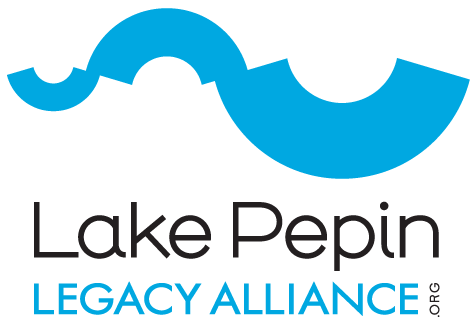“There’s an enchanting geological masterpiece located in the Midwest called the Driftless Area. This unique region, unscathed by ancient glaciers, is characterized by aggressive topography-steep, breathtaking valleys, jagged limestone cliffs, and massive stands of mixed timber. The real treasure of the area lies beneath the ground: Some 600 natural springs feed thousands of miles of clean, frigid streams across the Driftless. It’s an ideal landscape for supporting trout.” Fishing the Driftless Area: The Best Kept Secret in the Trout World (outdoorlife.com)
Situated in the Driftless valley of the Mississippi River is Lake Pepin, whose water receives the discharge from 10 Class I and II trout streams. The Rush River is Lake Pepin’s longest tributary, flowing nearly 50 miles from its source near Baldwin, Wisconsin, to its mouth at Maiden Rock. It’s nearly 185,000 acre watershed includes parts of St. Croix, Pierce, and Pepin counties. Wells Creek, the largest on the Minnesota side, drains around 46,000 acres.
“Substantial upstream groundwater input helps maintain the perennial cold, clear water conditions that make the Rush one of Wisconsin’s finest trout streams, well known among anglers regionwide. Degraded water conditions likely decimated Rush’s native brook trout population during the early- to mid-20th century. But soil conservation practices and restoration efforts have since helped shift the trajectory, and an introduced brown trout community is now thriving in Rush.” - Emily Green (Rush River: a renowned trout fishery prone to flooding and erosion - Lake Pepin Legacy Alliance)
The Rush River Macroinvertebrate Monitoring Project, a newly based volunteer effort, took a closer look at the health of the Rush River by sampling macroinvertebrates across 16 locations within the watershed. Stoneflies are one of the most sensitive species to the presence of pollution and were found in 10 of the 16 sampling sites.
Stonefly: photo courtesy of Carl Nelson
"Although it remains a high-quality fishery, the Rush River is not immune from the many stressors facing our trout streams. These streams and the surrounding landscape are sensitive ecosystems that depend upon a complex food web, with macroinvertebrates being a critical element for energy transfer from organic matter to higher tropic levels." - Carl Nelson, Project Coordinator
The project team noted the importance of several environmental factors like organic pollution and widening stream channels on macroinvertebrate-based metrics. Areas with severe erosion are contributing to sedimentation within the stream, changing the historic cobble-bottom and reducing habitat for invertebrates and fish. In Minnesota, Wells Creek faces similar challenges.
Understanding the threats posed to these sensitive ecosystems allows us to advocate for thoughtful land use that maintains the integrity of our healthy Driftless trout streams and Lake Pepin’s own fisheries.
Join our efforts to protect this incredible resource: Support — Lake Pepin Legacy Alliance








